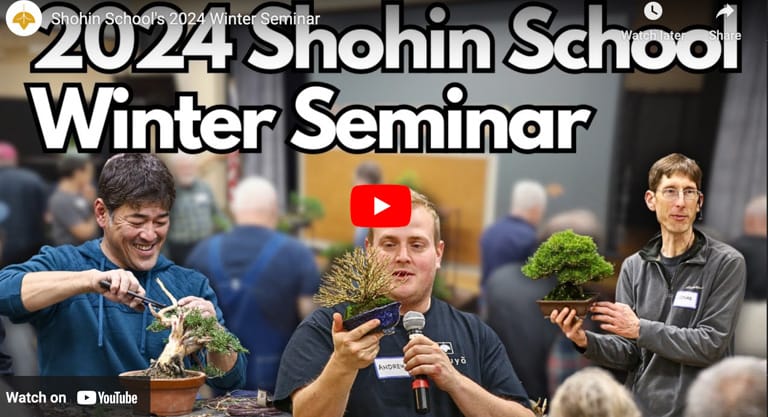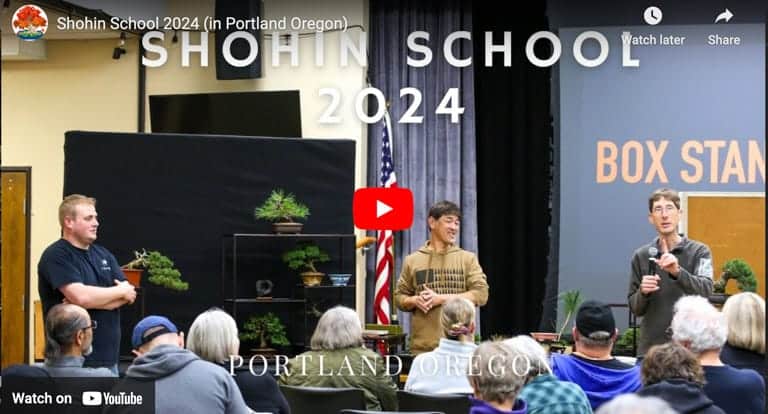Last month, Andrew Robson and I hosted a Shohin Seminar in Milwaukie, Oregon, featuring Japanese professional Daisaku Nomoto. Around fifty participants from seven states enjoyed two days of shohin education focused on how to create and display small trees.
The event was a ton of fun and participants had the opportunity to shop from a great selection of vendors including Kora Dalager, John Eads, Andrew Robson, Nao Tokutake, Mary Lai, Scott Elser, Daisaku Nomoto, Aki Yamakawa, and David Knittle.
Participants were encouraged to bring their own trees for critiques and display practice. We found there was a big improvement in the trees that participants brought to this year’s event – it’s exciting to see such enthusiasm for shohin!
Speaking of enthusiasm for shohin, huge thanks to David Knittle and his co-pilot Kevin for driving all the way from Vermont to host a build-your-own stand workshop to kick off the event. As a result of their efforts, David and Kevin provided the shohin community with 25 new shohin stands!
For those who couldn’t make it to the event, here are some of the key takeaways.
- When building displays, use shohin of roughly equivalent visual weight. It doesn’t matter if the trees are mini bonsai only four inches tall or larger shohin that are approaching eight inches tall. The main thing is that the trees are a good match for each other.
- Try to incorporate as much contrast as possible into displays. This includes tree species, style, and leaf type and pot color, shape, and style.
- If you don’t have enough trees to create a six-tree display tree with a box stand, consider creating displays with fewer trees using Rokko stands (five trees), Aso stands (four trees), or standard three point displays with Warabi or conventional bonsai stands (two trees).
- From Daisaku’s presentation: There aren’t enough great shohin in the US for everyone to go out and purchase whatever they want to complete a display. As a result, he puts the burden on us all to create as many shohin as we can so we create better displays.
And here are a few photos of the event courtesy Momiji-en Bonsai and Ceramics – thanks, Aki!
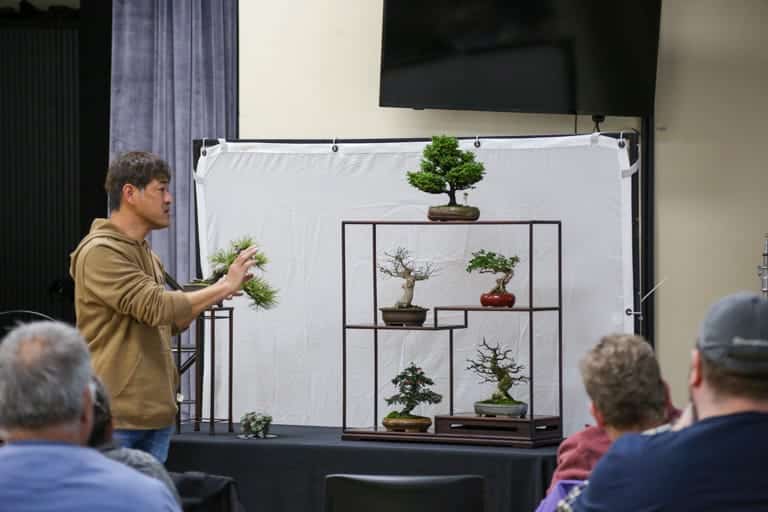
Daisaku making suggestions for a practice display
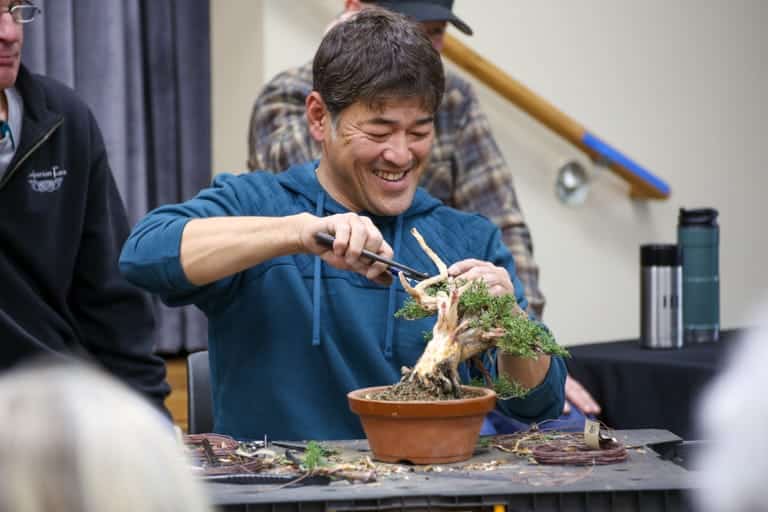
Daisaku demonstrating techniques for creating shohin conifers
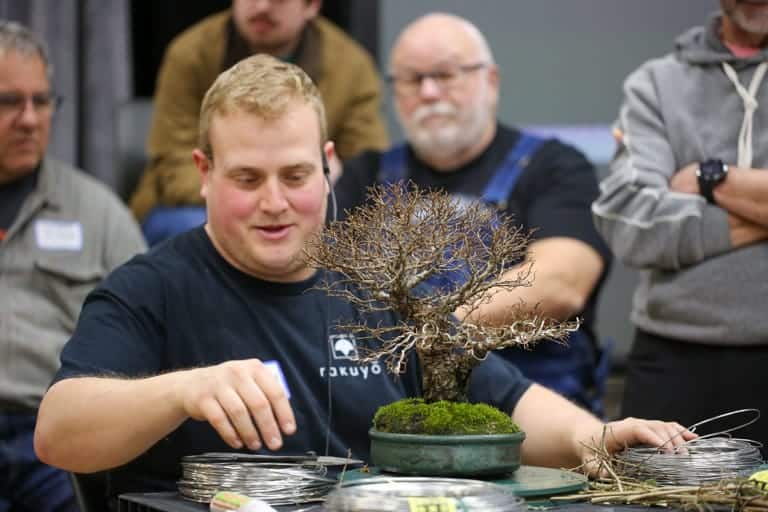
Andrew demonstrating techniques for creating deciduous shohin
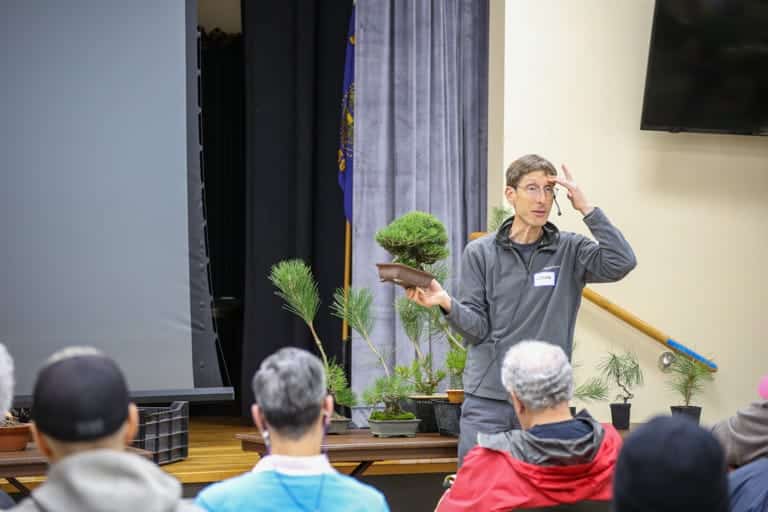
Jonas demonstrating techniques for growing pine bonsai for shohin
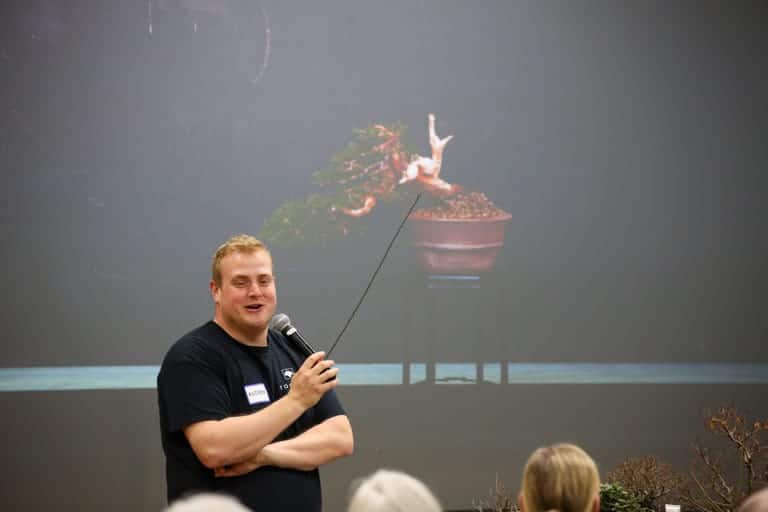
Andrew fielding questions about deciduous bonsai
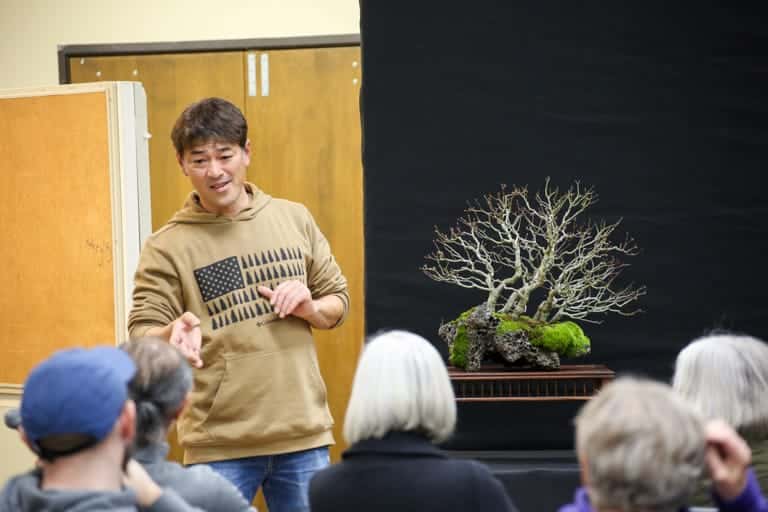
Daisaku lecturing about three-point display
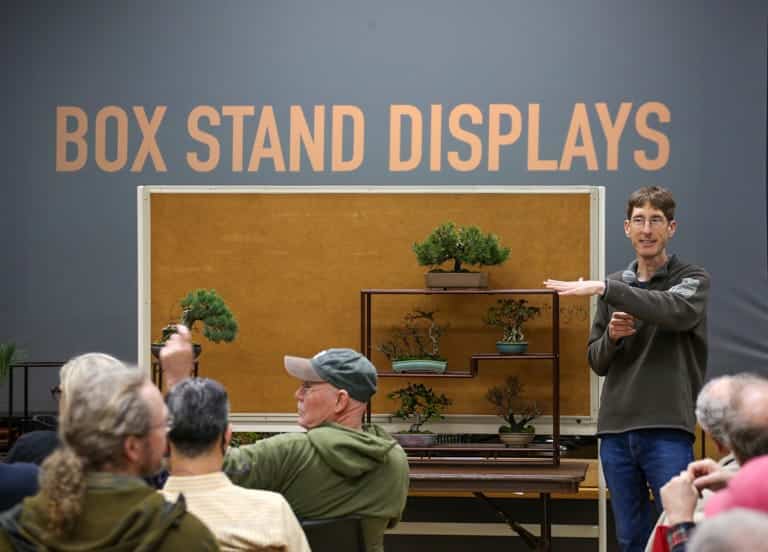
Jonas fielding questions about a practice display
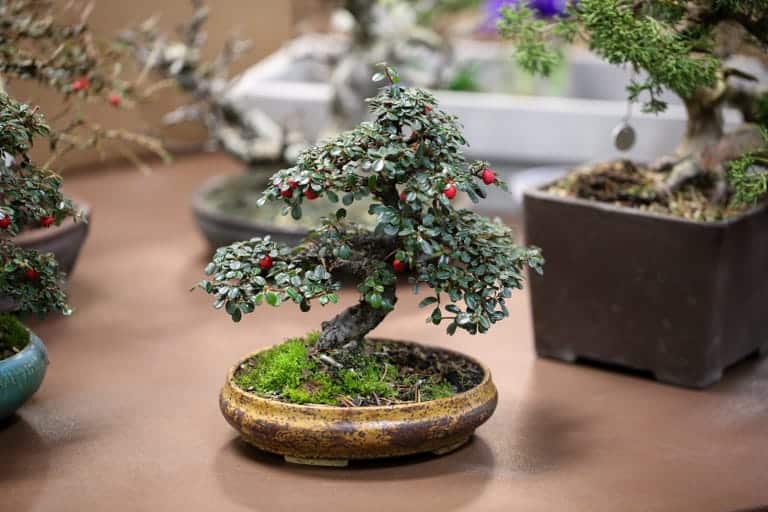
Cotoneaster waiting for the critique
Andrew and I are planning more events for Shohin School (maybe even a California event!) so stay tuned to the Shohin School website and IG account for updates over the coming year. In the meantime, check out videos of the event from Momiji-en Bonsai and Garden and Rakuyo’s Deciduous Bonsai Channel.

